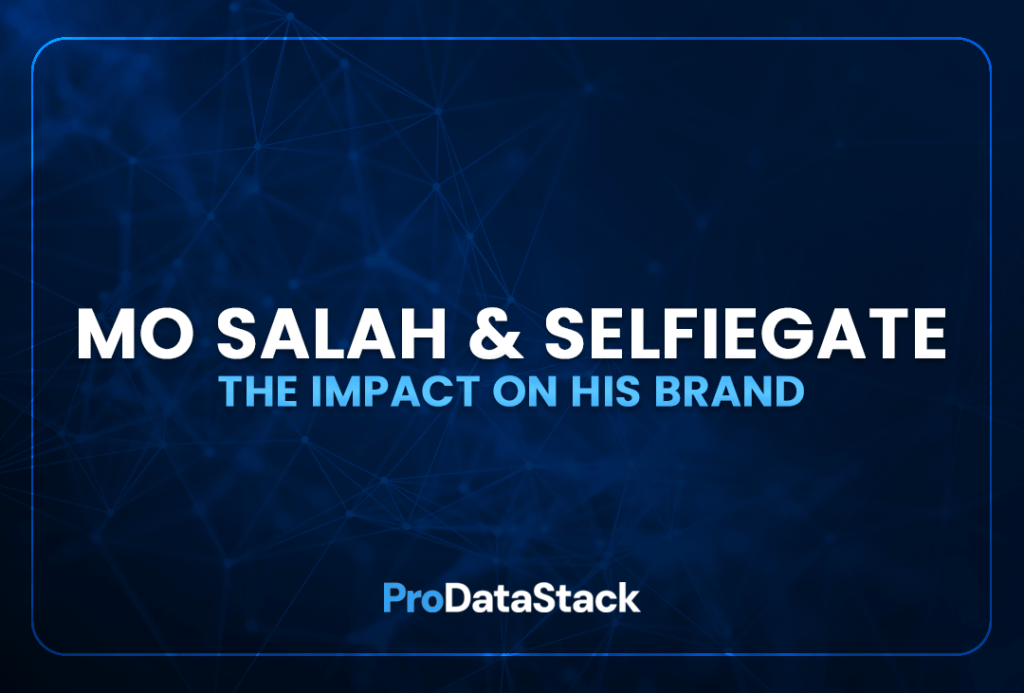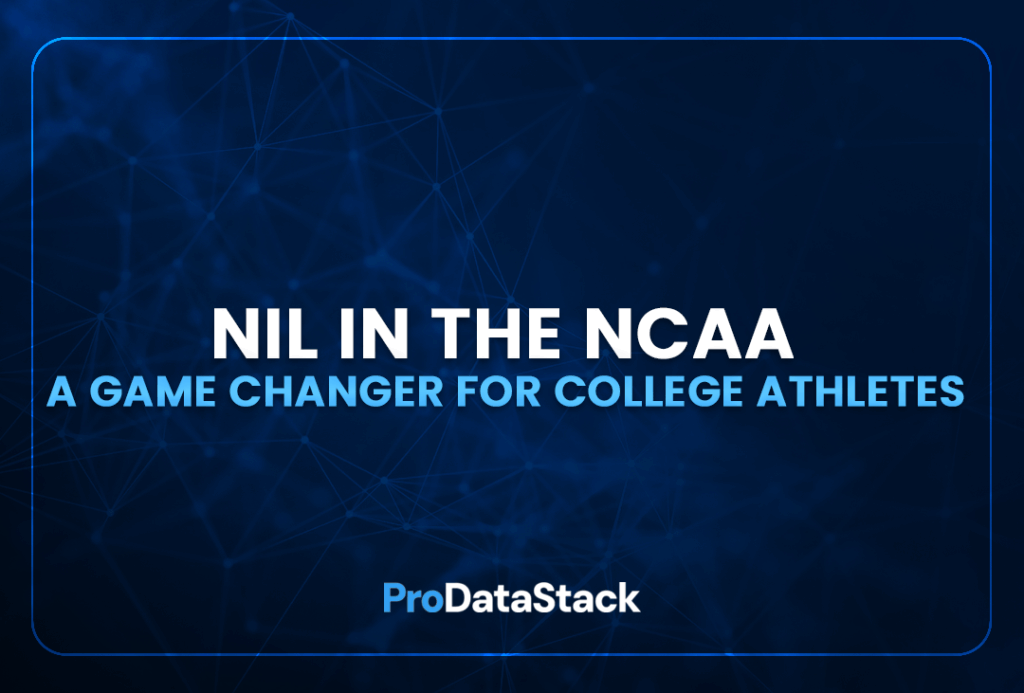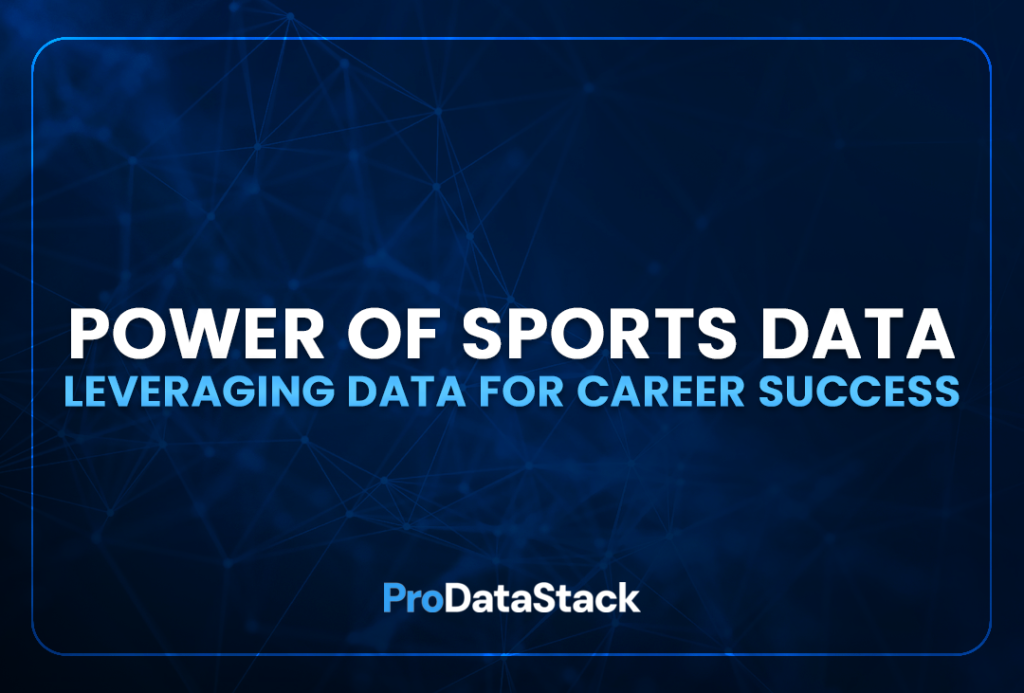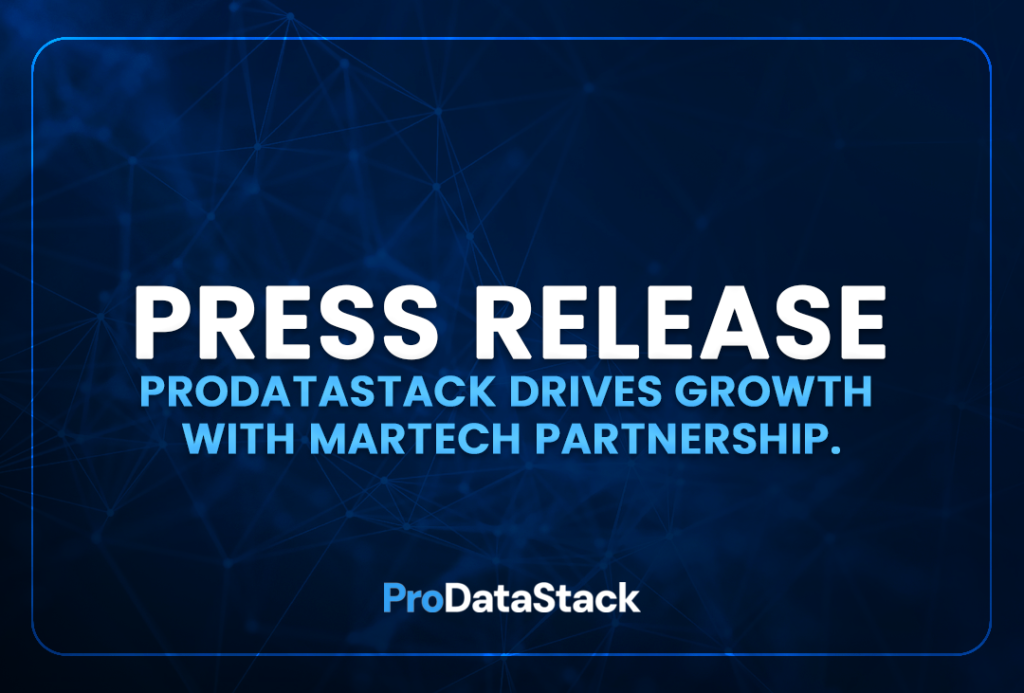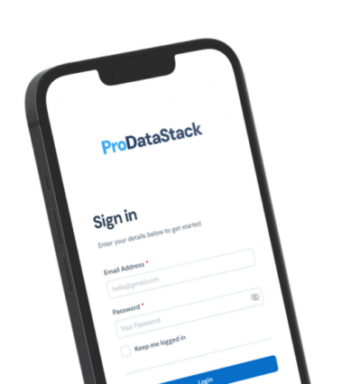In case you missed, it, Mo Salah caused quite a stir a few weeks ago.
It wasn’t his April 27th goal, part of Liverpool’s decisive 5–1 victory over Tottenham Hotspur at Anfield, which clinched their 20th English league title. Yes, it was a big moment. Liverpool needed at least a draw to secure the championship, and they delivered one heck of a performance with goals from Luis Díaz, Alexis Mac Allister, Cody Gakpo, and Salah, along with an own goal by Destiny Udogie.
But Salah’s goal was the fourth of the match so definitely not the decider.
And the fact that he celebrated by taking a selfie with fans made it quite a memorable moment in the title-clinching game. But not enough to cause any broo-ha-ha.
No, it was the fact he was seemingly “planted” to take the selfie with a Google Pixel phone, pushing a club sponsor’s product, that created the fuss. In a moment that should have felt raw and real, it just didn’t. Indeed, to many, it wasn’t seen as a celebration at all – it was seen as a campaign.
There’s been chatter that Liverpool’s commercial team orchestrated the scene, and while the club hasn’t confirmed the stunt, the coordination appears obvious. Salah didn’t reach for his or a fan’s personal device. He reached for the sponsor’s. The message was clear: this wasn’t just for the fans, it was for the brand.
Now, let’s be clear, sponsorship isn’t new. Nor is product placement. But what’s shifted is the setting: we’re now blurring the line between spontaneous sporting moments and pre-planned marketing moments, between emotion and execution. And people are noticing.
Gregg Evans wrote a great piece in The Athletic, looking at whether or not any rules had been broken, but it seems not: “Apart from breaking the internet, it appears the only punishment Salah could have received was a booking for delaying the restart of play.”
Sam Barnett went even further with his recap, calling it crass and blatant on one hand, but effective on the other: “It’s a best in class example of how to activate a sponsorship.”
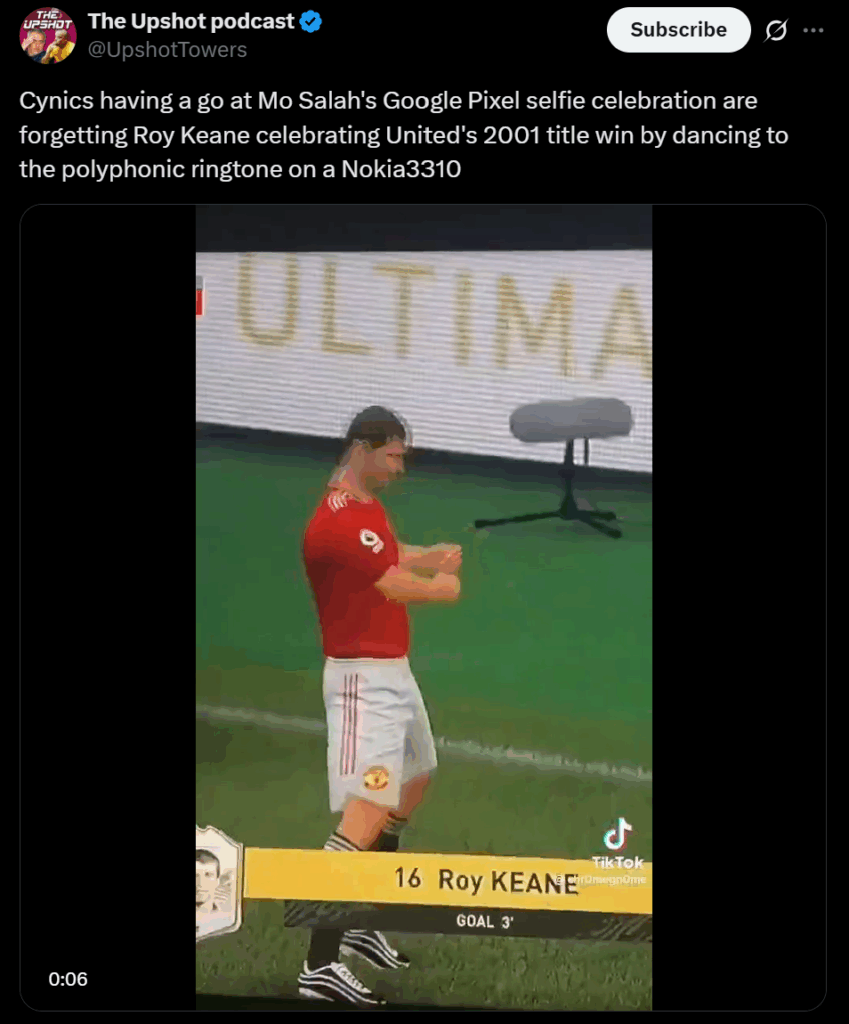
However my personal favourite has to be this X post from the guys at The Upshot: Cynics having a go at Mo Salah’s Google Pixel selfie celebration are forgetting Roy Keane celebrating United’s 2001 title win by dancing to the polyphonic ringtone on a Nokia 3310.
(No, it never happened, the Nintendo-esque graphics give it a way.)
So what about the data and brand value?
The question we always ask at ProDataStack is: so what? What was the outcome for Mo Salah: did the “crassness” of his actions negatively affect him and most importantly for the work we do at ProDataStack, how did it affect his sports brand value?
Looking at Mo’s social media accounts, the first thing we see is a steeper growth in his follower numbers across all three of his social channels, Facebook, X, and Instagram, no doubt triggered by his selfie antics.
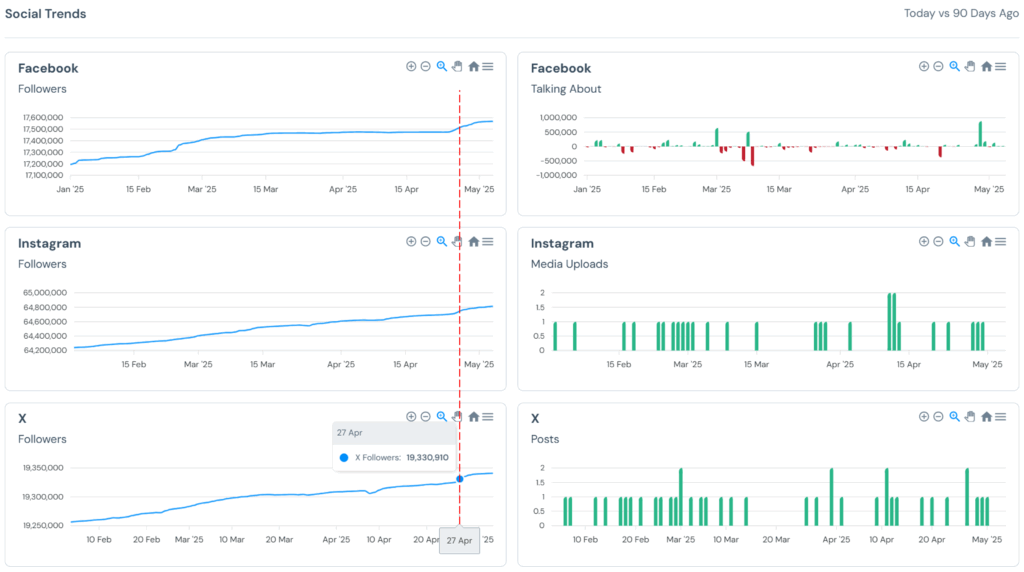
The increases as a percentage aren’t particularly significant, 0.5% on his Facebook account, 0.15% on Instagram, and 0.08% on X, but as his follower numbers are so high, cumulatively in excess of 100 million, the end result is another 200,000 individuals.
However the level of effort needed to generate that increase is minimal, just a couple of new posts. But the standout stat is how much engagement and interaction there was with Mo’s Facebook page: over 1.5 million from 28th April to 2nd May. That’s nearly 10% of his followers!! Given that the average engagement rate for a Facebook post is 0.15% and a top performer could get 1%, what does that make Mo in the world of engagement rankings?
Digital Relevance for a Footballer
Another key metric we track at ProDataStack is digital mentions – the equivalent of brand tracking in the corporate marketing world. As you can see from our charts, Mo’s been talked about a lot…and I mean A LOT…over the last five weeks, caused by the will-he-won’t-he contract signing debate. News that he’d finally signed on April 11th caused the biggest peak with 169 million people reached on that one day alone, but football’s SelfieGate generated just 20% fewer content pieces.
In the world of football news, a contract signing is a big deal. Taking a selfie isn’t. Except when Mo Salah does it.
Digital Sentiment of an Athlete
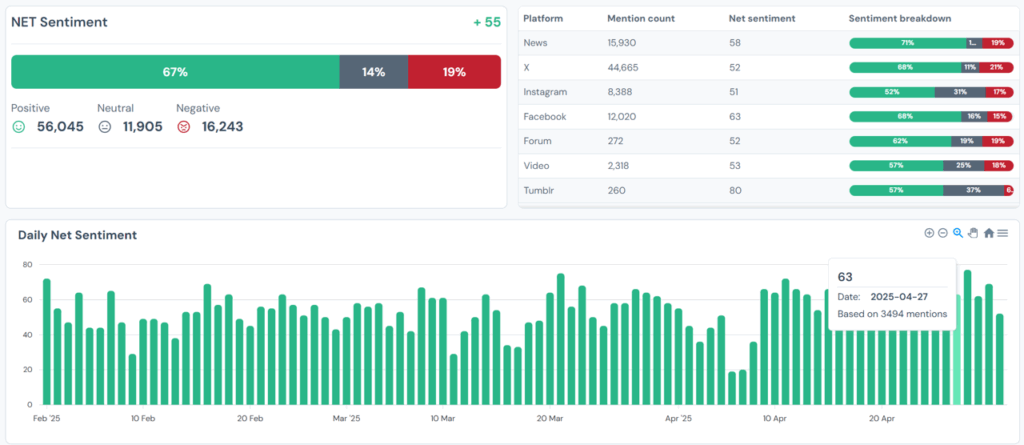
The final data point that matters to us is digital sentiment: do people feel positive, negative, or neutral about Mo Salah and his Google Pixel antic? And yes, you guessed it: despite it being planted and blatant, it didn’t materially affect his brand…if anything, it created a minor peak in net positivity, meaning way more folks responded positively than negatively to the incident.
A Footballer’s Value as a Brand
So what does this analysis tell us, and how should our clients use it moving forward?
1) Even a planted selfie can drive meaningful brand outcomes. Mo Salah’s celebration may have been commercially engineered, but it didn’t alienate fans: it nudged his social numbers upward, spiked engagement, and generated conversation on a scale most marketing departments can only dream of.
2) In the past, moments like this would be remembered for their spontaneity. Now, they’re designed for scale — and fans are adapting. As long as the execution doesn’t feel cynical or clumsy, a commercial layer doesn’t cancel out authenticity. In Salah’s case, it may have even enhanced it.
Why Athletes Partner with ProDataStack
A professional athlete’s value isn’t just about their skill on the ball, with the racquet, on the tracks, It also includes the surrounding narrative. Engagement, reach, sentiment: these aren’t side effects. They’re signals. They shape perception, drive sponsorship potential, and help define a player’s worth as a sports brand.
And ProDataStack helps you access and understand it.
If you’re an athlete or agent and would like to know more about ProDataStack, you can book a demo today by clicking here.

